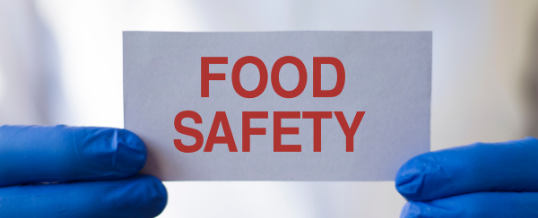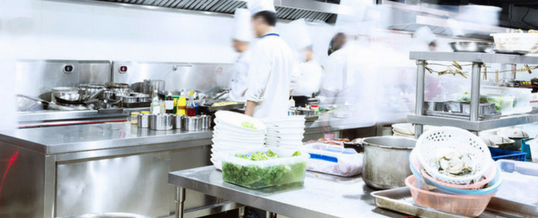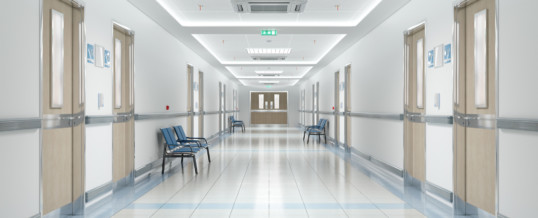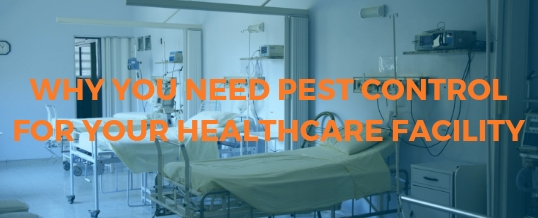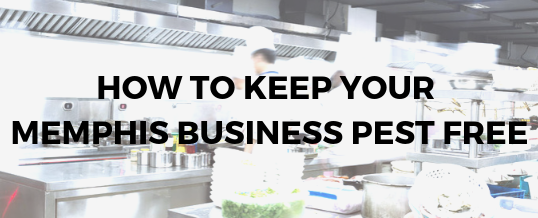Are you a commercial property owner who is worried about the possibility of a bedbug infestation? Do you already have a bed bug problem on your hands and you’re concerned about the bed bugs spreading?
Or perhaps you don’t have a bed bug problem now, but you want to arm yourself against the very real potential that you might be faced with bed bugs at some point.
Bedbugs can devastate a business, especially for business owners in the hospitality industry whose reputation and success depends upon the satisfaction of their guests.
In fact, recent surveys show that bed bugs are concern number one for people when choosing a hotel. For many guests, they’ll ditch a hotel immediately if they come across a single bed bug.
If you suspect that you have bed bugs, or if you want to know more about how a commercial property owner can benefit from a professional exterminator, here are 8 good reasons why expert help is a must:
1. Bed Bugs Can Be Carried by Anyone
Most commercial property owners go to great lengths to keep their buildings clean and accommodating and sanitized. They understand the importance that cleanliness has on making a good impression with their guests.
But when it comes to bed bugs, you could have the cleanest place in town and still find yourself with a bed bug problem on your hands. This is because anyone can transmit bedbugs from one location to another.
Unlike cockroaches, an infestation with bed bugs has nothing to do with cleanliness. They can be brought onto a property unknowingly by an employee, a resident, a guest, a service person, or a client at any time.
And while bed bugs aren’t able to fly, they are small and quick and adept at hiding and burrowing. A person can pick up a bed bug on their luggage, handbag, clothing, or shoes and move them from one location to another without realizing it’s been done.
Because a bed bug infestation can happen so quickly, commercial property owners find themselves turning to a professional exterminator to get rid of the problem.
2. Identifying a Bed Bug Problem Often Requires an Expert
In many situations, it can be difficult to identify a bed bug problem, especially if no one at your facility has actually seen the insect. This is another reason why an expert exterminator is essential.
Bed bugs are flat, oval-shaped bugs that are reddish-brown in color. If they’ve recently eaten they will be red in color and shaped like a balloon.
A bed bug exterminator is able to find those areas where bed bugs tend to hide most. Unlike bees and ants who form colonies and are easy to spot when they’ve grown to large numbers, bed bugs hide in crevices largely unseen.
They might hide in the edges of the carpet, in the creases of furniture, in wall dividers, at the seams of curtains or bedding, behind picture frames, and behind electrical sockets and surge protectors.
Their ability to hide so well and in so many places makes it nearly impossible for a property owner to locate them all and rid of them without help.
3. Bed Bugs Can Spread Quickly
Another big reason to seek professional extermination help as soon as you suspect a bed bug problem is because bed bugs can spread multiply and spread quickly.
All it takes is one bed bug to begin a full-blown infestation. One single bed bug can lay up to 500 eggs in its lifetime (over the course of a year). That’s an average of 1-12 eggs each day.
With each developed adult bed bug, these numbers only multiply. This is why it’s crucial that a bed bug issue is dealt with swiftly. A professional exterminator will be able to identify the problem and treat it before the situation becomes much worse.
4. Bed Bugs Are Resilient
Bed bugs are harder to get rid of than many people realize. They are very resilient and can survive in even the most extreme temperatures ranging from freezing to upwards of 122 degrees Fahrenheit.
These pests aren’t just resilient when it comes to extreme temperatures either. Many infestations have developed a resistance to common pesticides making them even more difficult to kill.
And unlike cockroaches, bed bugs can survive many generations of inbreeding and still manage to produce healthy, thriving offspring. In most animals and insect groups, inbreeding would soon result in a population collapse, but this isn’t the case with bed bugs.
Some property owners hope that if they leave a unit vacant for a while, the bed bugs will simply starve to death and no longer be a problem. This is not a way to solve a bed bug issue.
Bed bugs can live for many months, even up to a year, without feeding on blood. If you leave bed bugs unattended in the hopes that they will starve to death, it’s more likely that they will multiply and spread throughout the complex.
An exterminator can treat the affected room or unit and the neighboring rooms to ensure that all the bed bugs have been killed.
5. Full Elimination is Difficult to Attain
Though there are some methods and kits that allow people to attempt to kill a bed bug infestation themselves, it’s very unlikely that all the bed bugs will be obliterated. Since they are so effective at hiding and multiplying, it’s best to save the time and money and allow someone who has been trained in exterminating bed bugs to do the job.
There are many situations in which it takes more than one treatment to get rid of a bed bug infestation. It can take many thorough treatments to kill off bed bugs completely and this process often takes extreme conditions, the proper tools, and lots of experience.
6. Protect Your Property Against Extensive Damage
Bed bugs can cause serious damage to your inventory. They can destroy towels, furniture, carpet, mattresses, sheets, curtains, and more. If you have bed bugs spreading into many rooms, the cost for replacing all of these items can start to add up.
It’s advised that you replace all soft materials and furniture after a bed bug infestation. It’s best to get professional help before the bugs are able to spread throughout the facility.
Bed bugs love to hide anywhere that’s dark and warm which means they might hunker down in electronics or appliances as well. This could lead to damage done to more than the furniture.
7. You Understand that Your Reputation Counts
As a property owner, you understand how important your reputation is in keeping your business afloat. News of a bed bug infestation can be devastating to your business as guests and visitors spread the news to others and encourage them to avoid your place at all costs.
It might take years to rebuild your reputation once the word has gotten out that bedbugs had once called your hotel or apartment complex home. Online reviews mentioning bed bugs are there for anyone to find and can raise concerns among potential guests even if the bed bug problem has long since been addressed.
Most guests expect full disclosure if a bedbug infestation has taken place at any point in the last several years. For their peace of mind, you want to be able to assure each guest that the problem has been handled professionally.
Don’t risk the health and well-being of your guests and clients. Keep your reputation intact and preserve all that you’ve worked hard for over the years by turning to a professional to get rid of your bed bug problem.
8. Consider Your Employees
It’s not just your guests who matter when it comes to keeping your commercial property free from bed bug devastation. Your employees count on having a safe, clean place to work.
If they discover there’s a bed bug infestation that is going untreated, many of them will soon look elsewhere for employment. However, if they realize that you’re acting quickly to treat the problem with the help of a professional, they’ll feel reassured and safer about coming to work.
Consider the health and well-being of each person you work with and serve, including yourself. Trust the experts to exterminate bedbugs for good.
Say Goodbye to Bed Bugs for Good
We’ve discussed some of the most important reasons why commercial property managers should turn to an experienced exterminator to get rid of their bedbug problem, now we invite you to do just that.
At Inman-Murphy Termite & Pest Control, we’ve got the skills and experience to rid your home or business of bedbugs quickly and efficiently, no matter how bad the infestation has become. We use an effective heat treatment to raise temperatures in the infected areas to 140 degrees Fahrenheit to kill off each and every bed bug wherever they might hide.
We understand that discovering a bed bug problem on your property can cause alarm and we’re here to help.
Learn more about our extermination process by browsing our website or by giving us a call today.
We also offer free estimates to all customers so schedule your appointment with us today! We look forward to serving you!


